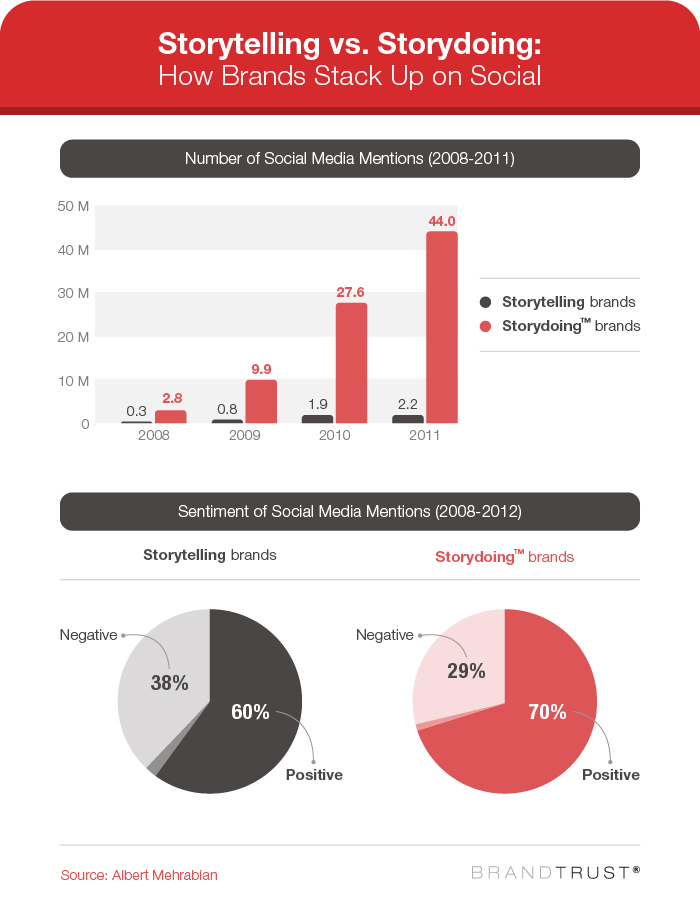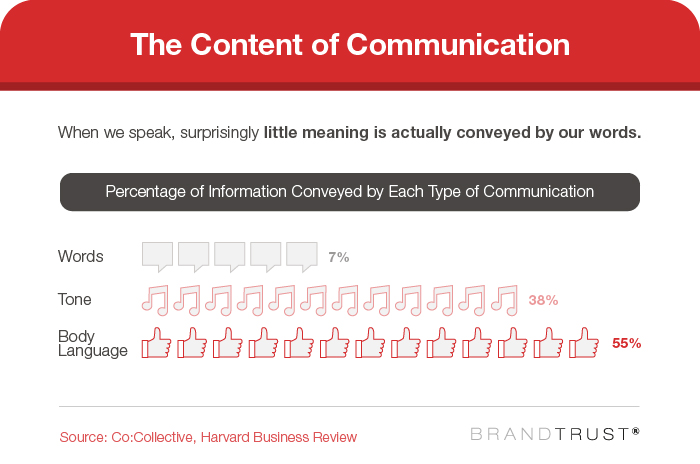In July of 2016, Wells Fargo was the envy of many financial institutions. Relatively untarnished by the post-Recession ire directed at many of its peers, the company’s stock had surged 26% since the depths of financial crisis. Merely 15 percent of consumers felt negative sentiments towards the brand, while 60 percent viewed the brand positively.
Two months later, in the wake of revelations of massive fake account fraud, those numbers had virtually reversed. In response, Wells Fargo CEO John Stumpf fired 5,300 employees he claimed had caused the scandal. “If they’re not going to do the thing that we ask them to do—put customers first, honor our vision and values—I don’t want them here,” he told reporters.
Stumpf’s attempt at shifting blame to low-level employees was roundly derided. The Wall Street Journal called it a “Textbook Case of Botched Crisis Management,” and Senator Elizabeth Warren described Stumpf’s approach as “gutless leadership.”
Citing thousands of individual employees as the source of a systemic issue simply didn’t seem credible. Failing to take responsibility for its culture, the brand saw its public perception continue to plummet, with nearly one in three current customers actively looking to leave.
While the case of Wells Fargo is exceptional in scope, it’s not the only brand to recently fall woefully short of achieving consumer confidence. Despite vast marketing and P.R. resources, many brands make damaging mistakes in their attempts to cultivate (or restore) the trust of customers. Indeed, recent research suggests that brand trust is under siege across the globe.
But why?
5 Common Mistakes in Building Brand Trust
At Brandtrust, we use a research-based approach to address and correct sources of customer anxiety. After more than 20 years of methodically studying what ails brands most, we’ve learned that every major issue a business confronts ultimately stems from a breakdown in trust. Yet without these insights founded in social science, brands often misunderstand how trust truly develops, and make painful errors as a result.
In “Little Things Big Returns,” Brandtrust founder and CEO Daryl Travis discusses how brands grow trustworthy reputations. Just as his findings illustrate how the world’s top brands inspire customers’ faith, they’re equally useful in diagnosing the mistakes many companies make in attempting to build brand trust.
Is your brand falling short along in these all-too-common ways? Here are five mistakes brands frequently make in attempting to build brand trust, and what you can do to address them.
Mistake No. 1: The Mission Lacks Conviction
No one’s asking your brand to adopt an altruistic aim at the expense of the bottom line. Yet your brand’s mission is its best asset in acquiring customers, which is essential to any growth strategy.
Think about the brands you recognize and support. You’re likely to find they possess distinct missions that inform how they do business. Inevitably, their quests coincide with the best interests of their customers.
We highlight the story of Zappos founder, Tony Hsieh, who started his company with the idea to improve the digital retail experience for consumers through impeccable service.
However, he didn’t empty his wallet for advertising; instead, he put most of his advertising budget into improving customer service.
In other words, he put his money where his mouth was, proving his integrity and conviction in his core mission. His bet paid off big in two essential ways: First, Zappos derives up to 75% of its business from returning customers. Those loyal buyers perceive the brand as capable and competent enough to deliver on their mission again and again.
Second, word-of-mouth referrals produced enough growth to compensate for the advertising Zappos’ lacked. Research shows 83% of consumers trust recommendations from friends or family when evaluating brands, making happy customers the most cost-effective medium for growth.
The proof lies in Zappos’ success: Founded in 1999, the company reached $1 billion in sales in less than a decade. That performance led to a $1.2 billion acquisition by Amazon.
Note that Tony’s success isn’t about idealism; it’s about action. Had Zappos not invested according to its mission, it would have done little more than pay lip service to the customer experience.
Trust Tip: When making decisions, consider a simple question: Will this choice honor our mission, or is it simply the path of least resistance?
Mistake No. 2: Storytelling, Not Storydoing
So how does your brand take your mission from rhetoric to reality? Branding expert and author Ty Montague advocates the “storydoing” approach, in which brands express their values in action rather than traditional communication.
While storydoing may sound like loose marketing jargon, this principle is actually grounded in hard data. Montague studied 42 publicly traded companies, comparing those who told their stories with those that led with action. He found storydoers surpassed storytellers on both financial means of analyzing performance and social media buzz.
Storydoing companies enjoyed an average annualized share price growth of 5.6%, while storytelling brands saw share prices drop by 4.4%, on average. Meanwhile, social media mentions of storydoers were more positive and more numerous. In one year, storydoers saw 44 million social media mentions, whereas storytellers claimed just 2.2 million.
Red Bull presents a classic case of strong storydoing. Certainly, the company’s “gives you wings” messaging could easily be dismissed as goofy hyperbole. But by constantly supporting high-adrenaline events through sponsorship, the company is doing its story every day. Consumers trust the brand’s claim to supply the energy they need because the brand’s sponsorship makes energetic activity possible around the globe.
Trust Tip: When choosing how to allocate resources, invest in practicing your principles, rather than just preaching them.
Mistake No. 3: The Culture Doesn’t Serve The Customer
Let’s revisit Tony and Zappos for a moment. While we’ve discussed how his investment in customer service fueled the company’s growth, we haven’t said how he specifically spent that cash.
If you imagine a nuanced mix of process changes and technological upgrades, the answer is far simpler. He spent it empowering the Zappos team to deliver excellent customer service.
Zappos’ ascent to customer service supremacy can be told in different but related terms: The company became a paragon of a thriving workplace culture.
Much can be said about the revolutionary nature of the Zappos culture. Here’s a telling example: The company offers $2,000 to employees who’d like to resign. The offer ensures employees aren’t lingering around unhappily just to pick up a paycheck.
Less than 1% of employees take the offer. Instead, they stick around to enjoy a unique, comprehensive professional growth regimen, including 28 personal development courses.
You might be asking how happy employees equate to trust in a brand. For one thing, research shows that treatment of employees is the biggest determinant of the public’s trust in a given company. Consumers also experience culture directly in their experiences with the brand’s representatives.
Zappos, for instance, asks employees to do something special for the customer when they’re out of a particular style or size. Instead of simply turning the would-be customer away, sales reps suggest competitors who may be of more assistance.
Employing this strategy converts consumer disappointment into a pleasant surprise – elevating brand trust. Zappos proves it can be trusted to do right by would-be buyers, even at the expense of a sale. Sales reps don’t earn a commission for this generous act. They do it because they’re supported by a culture that acknowledges excellent customer service, even when the bottom-line benefit isn’t immediately apparent.
Does your brand’s culture empower employees to deliver remarkable service experiences? If helping a customer didn’t directly align with a sale, would your team go the extra mile?
Trust Tip: Focus on culture, and service will follow. Lofty ideals won’t matter much if they don’t reflect your team’s reality.
Mistake No. 4: Missing the Trees for the Forest
Consumers don’t expect perfection at every step along the sales and service trajectory. Rather, they develop an impression about their experience though particular “touchpoints” during the process.
Nobel laureate Daniel Kahneman described this phenomenon as the “peak/end rule,” which explains that we characterize our experiences based on the most intense and final moments. If brands want to use data to guide their service, they’d do well to seek information on the peaks and ends of their customer interactions. These are the moments that matter most to consumers and, by extension, the brand.
Consider the example of the London Underground, where consumer experience data showed authorities that commuters hated waiting for trains. Drilling deeper, authorities recognized the most emotional element of any ride was the anxiety riders felt about when the train would actually arrive.
This unpleasant mix of uncertainty and boredom could create a negative peak experience, even if the Underground eventually delivered riders to their destinations on time. Recognizing this risk, officials installed digital displays informing riders when the next train was due to arrive.
The result? A significant surge in positive feedback among riders. The practice of installing real-time signage is now widely recommended by industry experts and academics.
The simple but powerful fix replaces uncertainty with trust in the consumer’s experience. However, train authorities could easily have overlooked this insight, focusing on data related to a range of other factors.
If your brand is digesting reams of data points about internal operations and customer experience, you might miss the valuable “touchpoint” needle in the data haystack. Is your team looking at the big data picture or at specific peak moments, where brand trust could be elevated?
Trust Tip: Don’t try to analyze everything at once. Instead, put yourself in the consumer’s shoes to uncover essential service moments.
Mistake No. 5: Listening to What Customers Say, Not What They Think
If you’re looking for what makes consumers tick, there’s one source of information you should regard with the skepticism: What they actually say about themselves.
Our speech is notoriously limited in its ability to reveal our true feelings. Psychologist Albert Mehrabian famously found that just 7% of the information humans convey about their feelings and attitudes is contained in their words. The rest of the information we derive from their responses is tonal or nonverbal.
That’s a pretty damning indictment of the traditional customer feedback survey. But the problem goes deeper: Many of our tools for making choices lie below the level of conscious thought. Behavioral economist George Loewenstein has repeatedly emphasized that subconscious factors influence decision-making, sometimes against our rational interest.
So what can brands utilize to understand their target market better? At Brandtrust, we’ve developed an Emotional Inquiry® system to access the subconscious elements at play in consumer relationships with brands.
Our white paper on the subject details our approach more thoroughly. At its core, our technique uses one-on-one interviews to uncover the true motives and desires underlying the conscious goals and preferences they articulate.
We describe this method in practice through a number of our case studies. One such success involved an electricity company, who had scrapped a popular practice of sending cookie recipes out to customers around the holidays. While consumers weren’t likely to say this discontinued gesture was important to them, our research revealed it really was.
That insight would have been impossible to access using a traditional customer survey. Few consumers articulate their appreciation of small gestures. For this client, however, cookie recipes were an unseen key to unlocking goodwill and trust with customers. In other words, we’d uncovered an invaluable “touchpoint.”
Trust Tip: Don’t rely on what customers say alone. Dig deep to hear what they really want.
The Path to Building Brand Trust
While brands across the world labor to earn the trust and confidence of consumers, we’ve seen those that do reap rich rewards. Brand trust is a delicate and complicated phenomenon that takes root at a subconscious level. That makes it difficult to achieve and maintain – and all the more enviable as a result.
At Brandtrust, we’ve developed highly specialized processes aimed precisely at resolving this problem. Our team’s findings empower brands to understand the dynamics at work in their consumers’ attitudes and actions. Armed with these insights, our clients can deliver what their customers truly want and need, growing loyalty and trust along the way. For the modern brand, those findings are indispensable, and powerful means to outmatch competitors.
To see how Brandtrust’s work transforms brand identities for the better, explore our case studies here.


